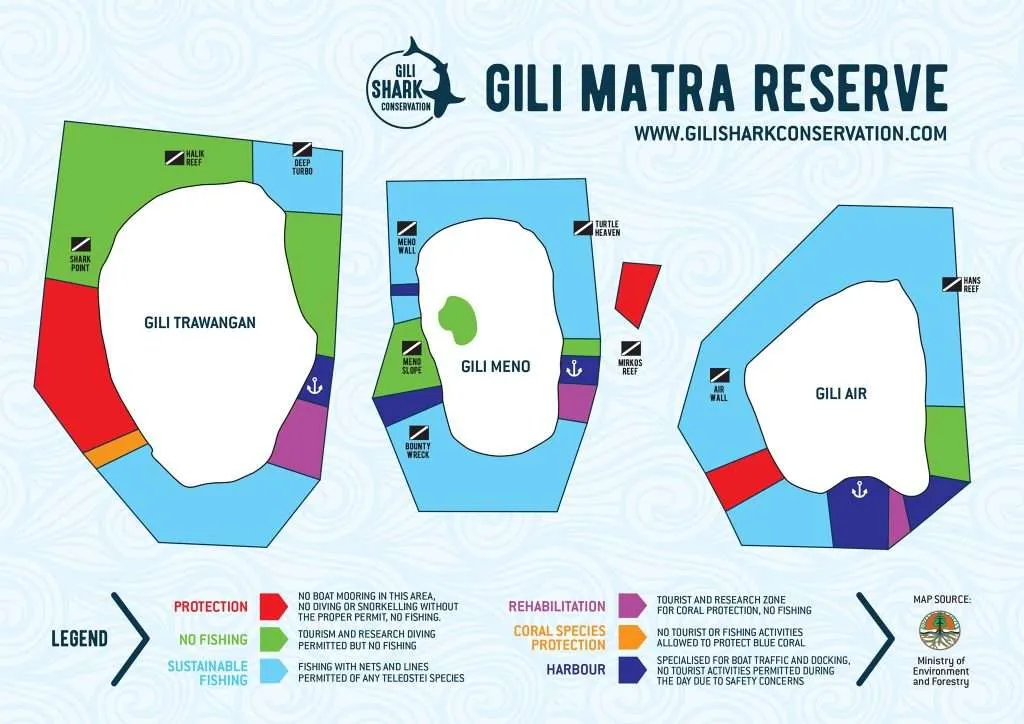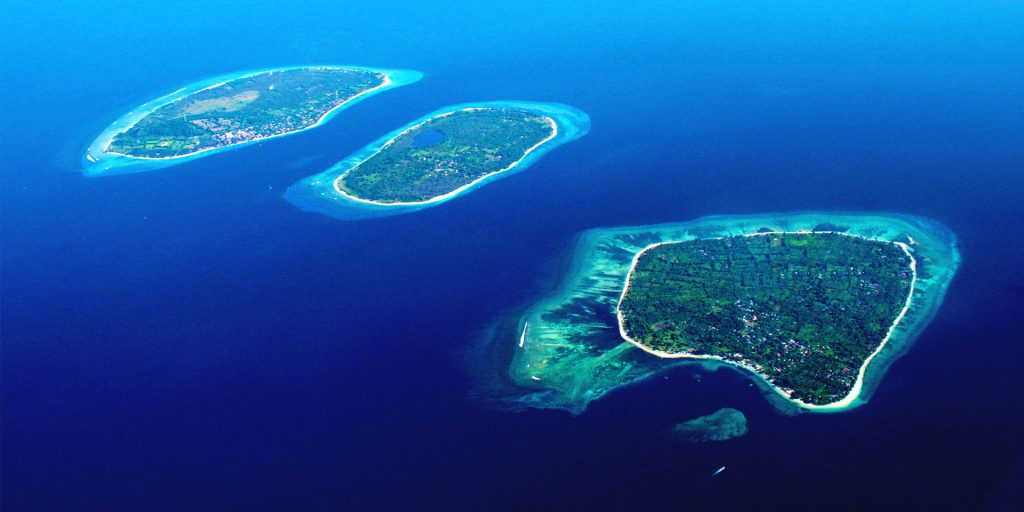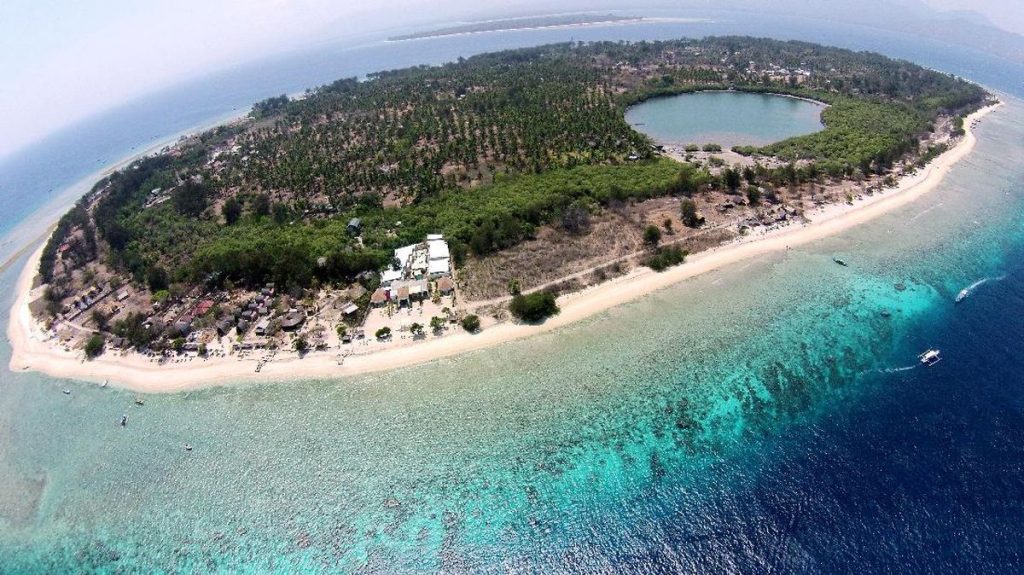The Gili Matra Marine Tourism Park (officially, Taman Wisata Perairan Pulau Gili Ayer, Gili Meno, dan Gili Trawangan di Provinsi Nusa Tenggara Barat) in West Nusa Tenggara gets its name from the three islands it encompasses: Gili Meno, Gili Air, and Gili Trawangan. Originally established in 1993 under the Ministry of Forestry, the park has been under the jurisdiction of the Ministry of Marine Affairs and Fisheries since 2009. Located in the northern Lombok Strait along the Wallace Line—a major biogeographic boundary—the park sits at the intersection of the Pacific and Indian oceans. This location exposes it to the powerful Indonesian Throughflow, where strong tidal currents and underwater topography generate internal waves that drive deep, nutrient-rich waters to the surface. These oceanographic conditions enhance marine productivity and contribute to the park’s rich biodiversity.
Gili Matra’s waters support critical habitats for protected marine species, including hawksbill, green, and olive ridley sea turtles, as well as reef sharks and rays such as manta and mobula rays. Blue coral colonies and expansive seagrass beds add further ecological value. Gili Meno, in particular, is recognized for its extensive seagrass meadows, which serve as essential nesting and foraging grounds for sea turtles. Conservation zones have been established to protect these sensitive ecosystems.
Details
|
Date Established |
Established under the Ministry of Environment and Forestry in 1993; Established under the Ministry of Marine Affairs and Fisheries in 2009. |
|
Hectares |
2,273.56 hectares, including approx. 95 hectares of no-take zones |
Zoning Map

The Beauty Of The Coral Reefs Of Gili Matra National
Traditional local wisdom plays an important role in marine stewardship, notably through the awig-awig system—a customary law used to manage coral reefs and regulate resource use. This system empowers communities to enforce rules around fishing practices, marine zonation, and environmental protection, often including community-based sanctions for violations.
The park’s management is a collaborative effort involving a broad network of stakeholders, including government agencies, village authorities, tourism operators, non-governmental organizations, academic institutions, and local conservation and fishers groups. The park’s vision emphasizes the sustainable management of biodiversity and marine resources, while also supporting community welfare and cultural values. Its mission includes strengthening institutional capacity, promoting responsible tourism, conducting joint patrols, and supporting education, research, and law enforcement.


